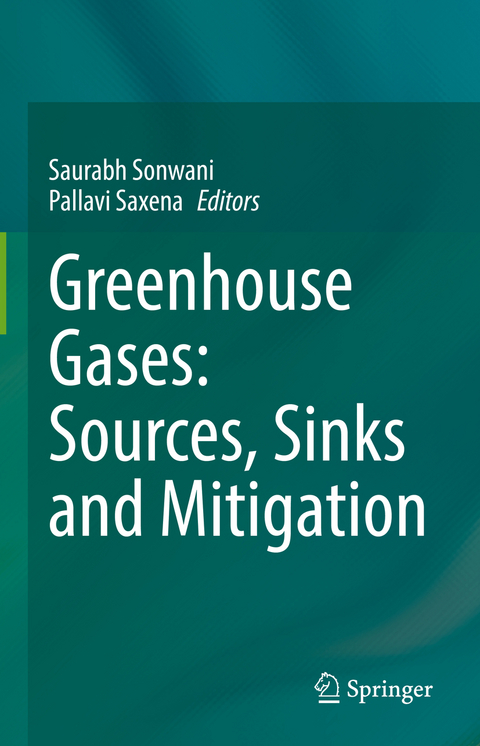
Greenhouse Gases: Sources, Sinks and Mitigation
Springer Verlag, Singapore
978-981-16-4481-8 (ISBN)
Saurabh Sonwani is currently working as Assistant Professor at Department of Environmental Studies, Zakir Husain Delhi College, University of Delhi. Till now, he has eight years of research and three years of teaching experience in the field of Environmental Sciences. He has been awarded Ph.D. from School of Environmental Sciences, Jawaharlal Nehru University, New Delhi & worked in the field of Atmospheric Chemistry. He has been awarded a CSIR-JRF in the subject of Earth, Atmospheric, Planetary and Ocean Sciences. He has published several research papers, book chapters and books in highly reputed journals/publishers in the areas of Air Pollution and Environmental Health. He is currently associated with TOAR-IGAC project as a member and co-author in publications. He is serving as an Associate Member of APSI, EnviroComp Institute, USA. He is also an active member of iLEAPS community, UK from South Asia and Middle east Region working for early career scientist. Pallavi Saxena is an Assistant Professor, Department of Environmental Science, Hindu College, University of Delhi. She has been awarded DST Fast Track Young Scientist Award at SES, Jawaharlal Nehru University, New Delhi. She has completed her Postdoc from SPASC, Physical Research Laboratory, Ahmedabad, India. She has been awarded Doctor of Philosophy in Environmental Studies from the University of Delhi on ‘Effect of Photochemical Pollutants on Plant Species’. Her area of interest is air pollution and plant physiology. She is elected as Chair of South Asia and Middle East Region of ECR, iLEAPS, UK. She has also been a co-author and collaborator from India in TOAR from 2015 onwards. Till now, she has published about 45 research publications in journals/books in Atmospheric Science and published 4 books in the field of Air Pollution and Plant Health in Springer and other publishers. She is also an Advisory Board Member of APSI, USA.
Chapter 1. Introduction to Green House Gases: Sources, Sinks and Mitigation.- Chapter 2. Source Apportionment of Greenhouse Gases in the Atmosphere .- Chapter 3. IDENTIFICATION OF MAJOR SINKS OF GREENHOUSE GASES.- Chapter 4. Greenhouse Gas Emission Flux from Forest Ecosystem.- Chapter 5. EFFECT OF GREEN HOUSE GASES ON HUMAN HEALTH.- Chapter 6. Air Pollution and Greenhouse Gases Emissions: Implications in Food Production and Food Security.- Chapter 7. Optimization of Greenhouse Gas Emissions through Simulation Modeling: Analysis and Interpretation.- Chapter 8. ROLE OF BIOMASS BURNING IN GREENHOUSE GASES EMISSION.- Chapter 9. Ozone Impacts and Climate Forcing: Thailand as a Case Study.- Chapter 10. Role of Nanotechnology in Combating CO2 in Atmosphere.- Chapter 11. Mitigation Strategies of Greenhouse Gas Control: Policy Measures.
| Erscheinungsdatum | 28.01.2022 |
|---|---|
| Zusatzinfo | 1 Illustrations, black and white; XVI, 257 p. 1 illus. |
| Verlagsort | Singapore |
| Sprache | englisch |
| Maße | 155 x 235 mm |
| Themenwelt | Naturwissenschaften ► Biologie ► Ökologie / Naturschutz |
| Naturwissenschaften ► Chemie ► Technische Chemie | |
| Naturwissenschaften ► Geowissenschaften ► Geografie / Kartografie | |
| Schlagworte | Emission Budget • Greenhouse gases and human health • Greenhouse gases and plant health • Greenhouse gases and their control • Greenhouse gases modelling |
| ISBN-10 | 981-16-4481-0 / 9811644810 |
| ISBN-13 | 978-981-16-4481-8 / 9789811644818 |
| Zustand | Neuware |
| Haben Sie eine Frage zum Produkt? |
aus dem Bereich


